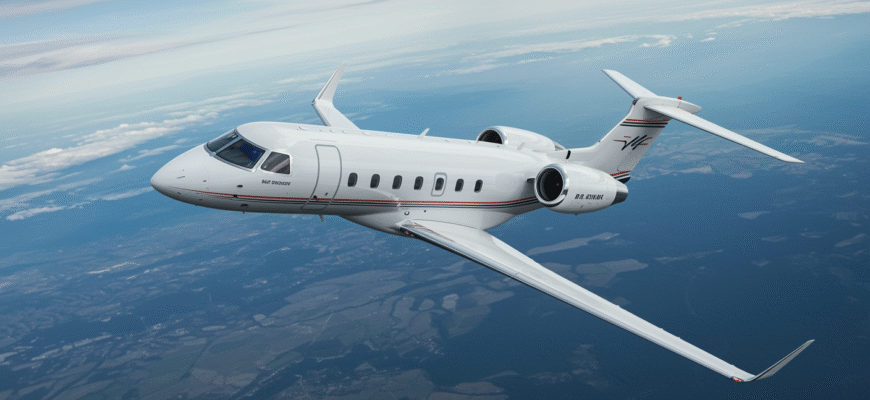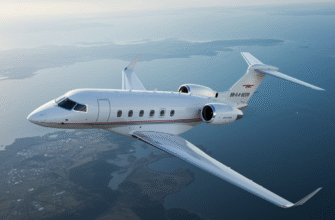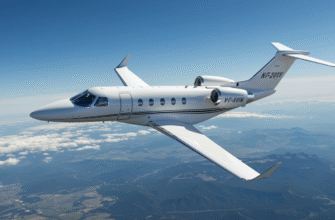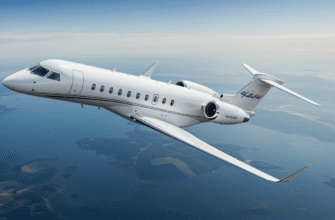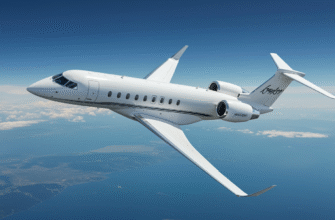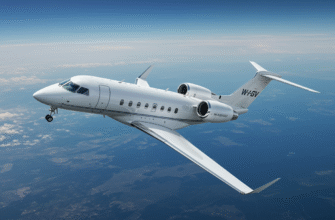There’s a reason some jets turn heads on the runway—and others quietly earn a cult following among people who fly dozens of times a year. The Bombardier Challenger 300 belongs to the second group. It’s not dripping in gold accents. It doesn’t try too hard. But for those who care about real-deal performance, interior comfort that actually counts on 5+ hour trips, and go-anywhere flexibility, it hits every mark.
This super midsize jet was rolled out as an all-new design—not a recycled version of older models. That decision gave Bombardier room to rethink what a midsize jet could do, and it shows. The Challenger 300’s numbers speak for themselves: long range, high-altitude cabin comfort, reliable engine performance. But what really gives it staying power is how all those elements work together without any unnecessary fluff.
Whether it’s shuttling execs from Boston to LA or hosting a family ski trip to Aspen, this jet doesn’t need a spotlight. It just needs a runway.
What Makes The Challenger 300 Stand Out In The Super Midsize Jet Category
Plenty of midsize business jets aim to be “all-in-one,” but few actually deliver. The Challenger 300 pulls it off. It walks the line between ultimate comfort and high-stakes utility—a rare balance in aviation. You won’t find excessive décor or trophy jet vibes here, but you will find:
- Genuine luxury from cabin features that actually make your life easier, not just prettier
- Real-world flight performance with the guts to handle longer legs and smaller airports
- An atmosphere tailored for working or unwinding on the go
Executives book it to keep roadshows smooth. Celebrities love the low-profile entry and cozy feel. Families appreciate how it fits skis, pets, and half a closet without hassle. It’s just as reliable on a 500-mile sprint to Nashville as it is on a transcontinental red-eye.
Performance Specs You Can Actually Use—Not Just Read About
When a jet brags about long-range capability, it only matters if that range can be put to real use. The Challenger 300 really can take you from coast to coast—New York to Los Angeles—without stressing about fuel stops. With a range of up to 3,100 nautical miles, this aircraft comfortably handles nonstop legs across the US and most of Central America. And it doesn’t sacrifice speed to do so.
| Performance Factor | Challenger 300 Specs | Why It Matters |
|---|---|---|
| Range | Up to 3,100 nm | One-hop flights like Miami–Seattle or LA–Boston |
| High-Speed Cruise | Mach 0.82 (470 knots) | Cuts flight time for long hauls |
| Climb Rate | 5,000 ft/min | Reaches 43,000 ft in under 25 mins—above turbulence and traffic |
| Takeoff Distance | 4,810 ft | Gains access to smaller airfields like Aspen or Jackson Hole |
A standout feature? That quick climb. In under half an hour, the Challenger cruises at 43,000 feet, giving passengers a smoother ride, better fuel efficiency, and privacy above commercial air traffic.
Landing performance also gives it a leg up—it can safely operate from shorter runways that rival jets often overlook. Cities like Teterboro, Sun Valley, or Napa can become go-to destinations, not compromises.
This aircraft also flies smart thanks to the Pro Line 21 avionics. Pilots get a flight deck that’s intuitive and streamlined—loaded with top-tier nav and safety tools, but not cluttered. It’s made for serious performance, but also pays attention to what gets used every leg of the way.
Layout, Cabin Comfort, and Storage Practicality
Picture this: you step inside the Challenger 300 and immediately feel like you walked into a space designed with long-haul comfort in mind — not just for one or two hours, but for the kind of cross-country flights where people start kicking off shoes, curling up, and actually sleeping.
It’s got that full stand-up cabin height (6’1”) and a flat floor throughout, making the walk from the double-club seating up front to the loungey divan in the back feel more like a private train car than a jet. With seating usually arranged to fit 8 or 9 passengers in a double-club layout, or even maxing at 10, nobody’s tucked away awkwardly. Everyone gets room to stretch, swivel, and recline.
Storage is an unsung hero here. The Challenger 300 carries 106 cubic feet of baggage — for reference, that’s enough to handle four full-size golf bags, a couple sets of skis, and at least nine decent roller suitcases without breaking a sweat. No more leaving your snowboard behind or having to ship your wardrobe separately.
What makes the in-cabin experience stand out, though, is the hush. Soundproofing insulation keeps conversations low and travel fatigue even lower. Plus, with inflight Wi-Fi and full charter configurations often including seat-side power, onboard entertainment, and climate controls, it’s tailored for business briefings or rewatching Succession midair.
The Challenger isn’t flashy inside — but it doesn’t have to be. It’s functional, sleek, and built for the kind of trips where the jet itself is part of the experience.
Cost of Ownership and Operating Economics
Anyone browsing private jets — especially ones as capable as the Challenger 300 — eventually has to ask: what’s it going to cost to keep this bird flying? Let’s break it down without all the guesswork.
Owners generally face around $3,281 per hour when you add up fuel, standard wear-and-tear maintenance, and expected fixes. That doesn’t factor in crew salaries or depreciation, but it gives a strong starting point.
One of the most underrated bonuses here is engine reliability. The Honeywell HTF7000 engines powering this thing aren’t just low-noise and high-thrust — they’ve also built a steady rep over the years for not throwing surprise in-flight hiccups. With solid maintenance intervals and optional diagnostic tech built into the avionics, the 300 is easy for flight departments to keep on track.
On the resale side, a well-kept Challenger 300 hovers around the $7.6 to $8 million range in the current year’s market, depending on upgrades and time logged. That’s one of the reasons these jets hold their ground on resale lists. For charter, they often book around $6,500 to $8,500 per hour — a sweet spot that gives owners the chance to offset costs if they list the aircraft part-time.
All in, it edges out similar jets when it comes to real-world cost-to-value ratios — not the cheapest, but definitely among the smartest plays in its weight class.
How the Challenger 300 Stacks Up Against Other Midsize Jets
When the lineup includes Gulfstream’s G280, the Citation Longitude, and Embraer Legacy 500, the Challenger 300 isn’t just another nice option — it’s one people keep coming back to, again and again.
Let’s zoom into what really matters:
- Cabin Volume: At 860–930 cubic feet, it beats the Citation and matches or nudges out the G280 in usable cabin space.
- Speed and Range: Mach 0.82 at max cruise and a range around 3,065–3,220 nautical miles mean it can head east-west coast nonstop, covering private trips or business missions without fuel stops.
- Resale Strength: Despite ending production in 2014, the 300 still holds value with brokers and long-time flyers — a clean-sheet design with staying power.
But data only gets you halfway there. Pilots consistently bring up how smooth it feels on approach, how intuitive the avionics are (hello, Pro Line 21), and how fast it climbs through the weather. Owners dig the no-surprise maintenance and the cabin pressurization that cuts down on post-flight burnout.
It might not come with the Gulfstream badge or Embraer’s newer cabin styles, but the Challenger 300 wins with consistency, smart engineering, and a reputation built on actual experience — not marketing sizzle.
